Super 8 and Super 16 movie cameras took a free-roaming Henri-Cartier Bresson style to documentary filmmaking and “run & gun” for the first time (as early as the 1960’s). Cadid footage of JFK on the election trail. French New Wave cinema in the 80’s. The run & gun simplicity of Bolex Super 16mm cameras is timeless.
The Sony RX10 on paper is perfectly equipped to be a cinematic run & gun camera. The lens for example: a stunning Zeiss 8.5-73mm F2.8 (constant aperture) zoom, would be worth $10,000 on a 16mm cine camera.
But does the camera as a whole deliver a cinematic image?
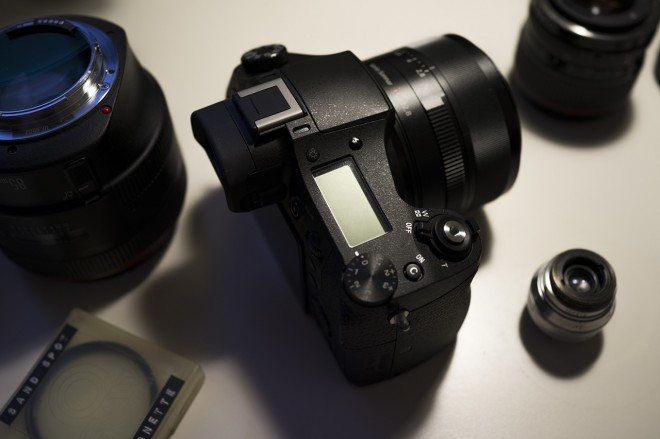
With this camera Sony have made an all out attempt to get it right and pack in everything we need for video.
Unfortunately it has a manic-depressive personality.
When it feels like delivering a shot it will do so very well. And what an ability you have to get that shot with a lens like the Zeiss.
But when it is feeling grumpy, you may get back to your edit later to find you have to axe entire shots.
The camera offers a lot of amazing stuff which we’ll come to at the moment and is an incredible shot getter.
But users will need to be aware of an unreliable AVCHD codec especially in 1080/60p/50p and some aliasing problems.
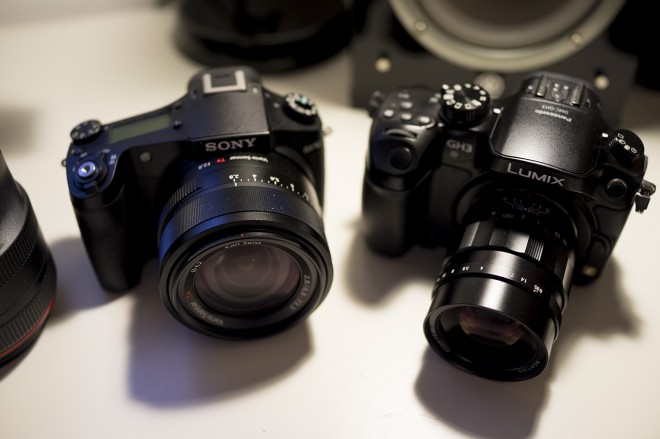
Above: the RX10 and GH3.
Now Panasonic have show how to do a consumer camera with regards to video.
For the same price as the RX10, the GH3 has no issues with codec break-up or mud at 1080/60p.
Panasonic also wisely stepped back from AVCHD as their high quality codec instead preferring to wrap H.264 in the far nicer Quicktime MOV file format.
Sony are just not at the same level. Their AVCHD codec on the RX10 has similar mud issues to the Panasonic GH1 (when it first came onto the market in 2009). Panasonic fixed this with b-frames and a better encoder on the GH2 just a year later whilst maintaining small file sizes of 24Mbit AVCHD. Sony have not yet given us a decent codec on any of their consumer cameras and we’re in 2013.
Put simply, 24Mbit and 28Mbit isn’t enough on this camera, especially not for 1080/60p. Around 10% of my shots had serious mud issues and around 5% were so corrupted I had to pull them from the edit (more on that in a moment).
Here’s some scenes with no issues, because they had very little movement in the frame… (click to enlarge to 1080p)
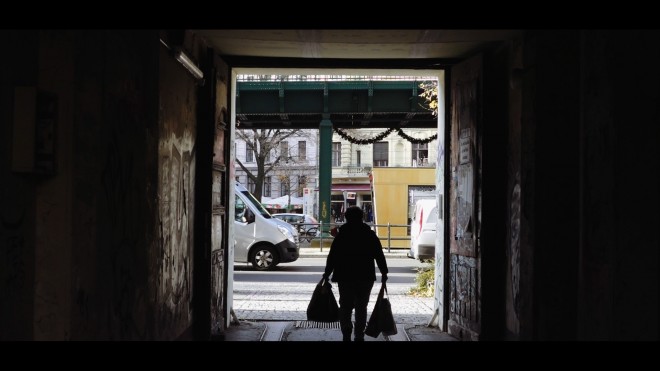
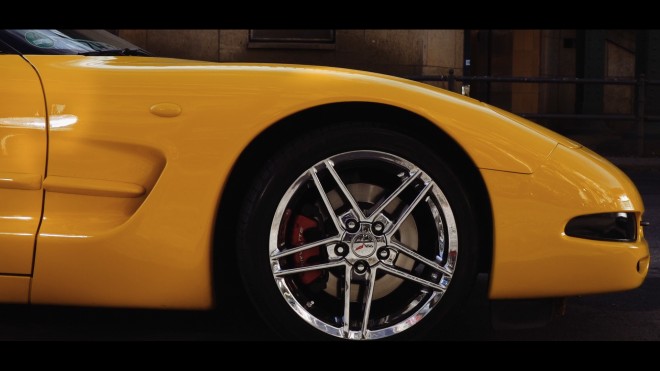
The other major issue is the aliasing. This sensor is blameless here – incredibly it outputs 5K in video mode to the image processor, but that then does such a bad job of hacking it down from 20MP to 2MP for 1080p video. The whole point of that full pixel readout is mute with an image processor this poor. There’s still aliasing and there’s still moire.
A sensor this good needs an equally good processor, which does a nice debayer and scaling to 2K. Maybe Sony’s ‘other’ prototype from earlier this year will finally turn out to be the Super 16mm cinema camera we all want and need.
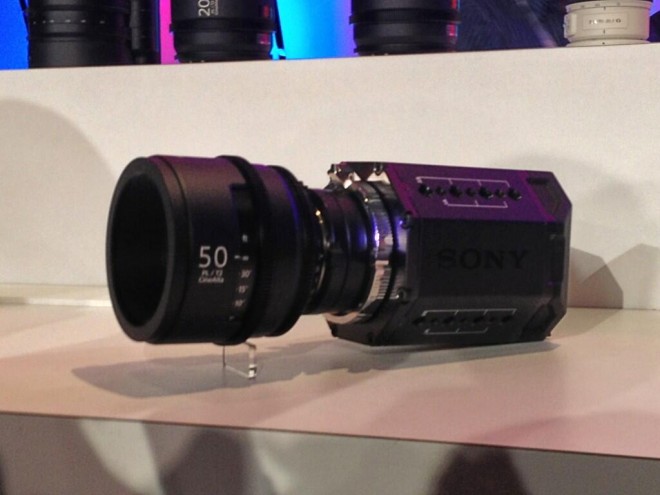
A small rant…
At the moment we have an incredible wealth of features on the market but never in the same camera and the situation only seems to be getting worse.
Olympus have the best stabilisation by far. It’s in a camera with a terrible codec and no 24p.
Canon give us raw video from a full frame DSLR… Sorry no, Magic Lantern give us raw video, but it’s saddled with a Canon DSLR!
Sony have a full frame mirrorless camera with lovely stills but so-so video with the A7R and Blackmagic have the best codec (ProRes) but very few of the other great features.
All these features are in cheap consumer cameras yet no other camera from $1000 to $50,000 has them ALL.
Sony’s joint technology sharing deal with Olympus should help. I hope their 5 axis stabilisation ends up replacing electronic SteadyShot on future Sony cameras.
BIONZ X and mud wrestling
Put simply the video processing in the RX10 is quite poor.
I have no doubt this sensor can do 4K, but in the RX10 either the bandwidth is too hot to handle and the processing power required too battery hungry or Sony thinks consumers by and large just want small file sizes and long clip run times. That misses the point entirely – lots of pros, artists, enthusiasts and filmmakers want to buy the RX10. Where is our high quality record mode? Why does only Panasonic really offer this? And as for the consumers who can’t recognise a good image when it slaps them in the face – they’re not short on options!
Given everything else the camera is offering and the undisputed focus on video users with the RX10, that is a REAL shame.
With the shot below of a spinning fairground ride, my iPhone 5S can genuinely do a better job of compression.
Obviously this shot was unusable in my edit… completely shot to death!
Click it for the 1:1 crop not scaled for the page…
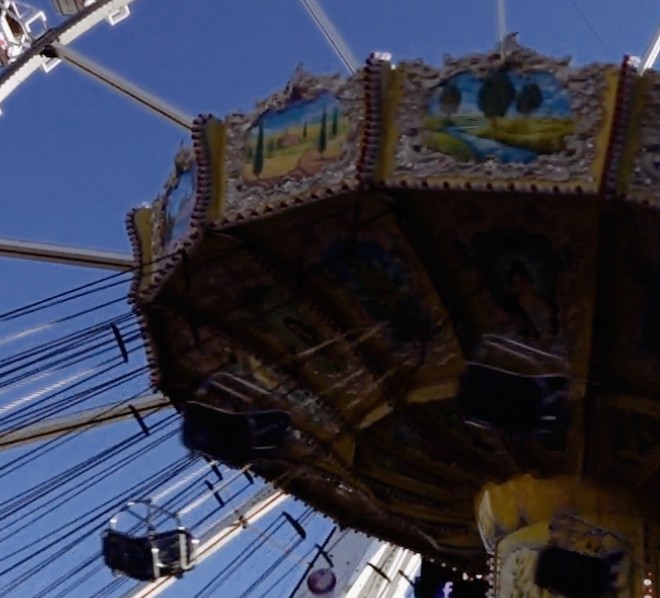
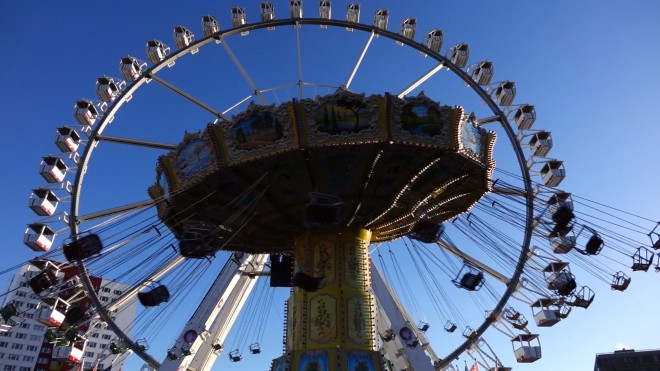
Above: a muddy frame (click to enlarge to 1080p)
The Sony FS100 has shown that AVCHD encoding can work if the engineers can be bothered to make it work.
The decision to saddle a top of the range prosumer video-orientated camera like the RX10 with an encoder worse than a $100 phone is just silly.
They have the technology already, it isn’t rocket science nor very expensive to implement.
AVCHD 1080/24p/25p handles motion blur better than 1080/50/60p internally…but it still falls down with complex movement and motion blur, the latter being reduced to only a slightly less pixilated mess than in 50 and 60p mode. A locked down shot with little or no motion is fine with the internal codec.
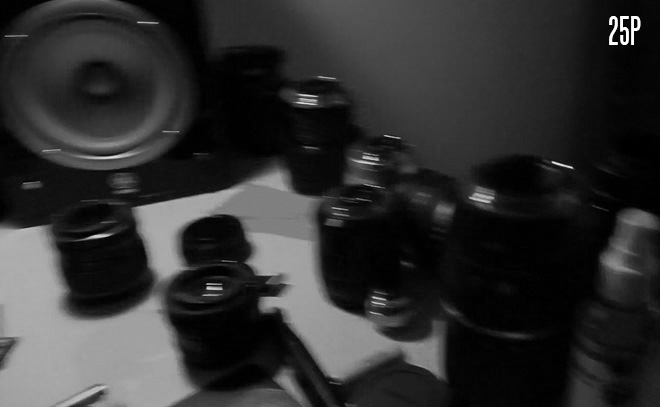
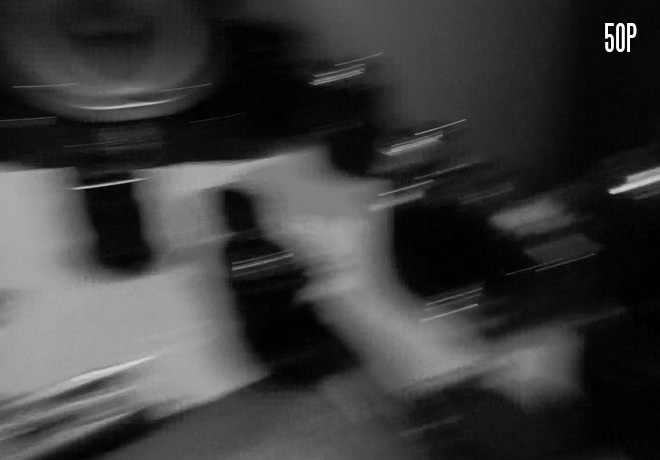
Uncompressed HDMI
The RX10 is a small, nimble, stealthy run & gun shot getter of a camera. Add an external recorder or monitor and you lose that small, light and stealthy convenience. Also none of the prosumer recorders support 1080/60p to my knowledge… yet. I think the Odyssey 7Q would work with the RX10 for 1080/60p but it costs much more than the camera itself.
Actually for 90% of the time you don’t need one. It’s just for the 10% of important shots that go down the drain.
Don’t think this will give you a Blackmagic ProRes-like image. It won’t. Colour depth is still 8bit, noise is still blotchy and it doesn’t of course fix the aliasing.
The RX10 uses a micro HDMI port – so it’s horribly wobbly and weak when connected to an external monitor or recorder.
It’s 2013 and we really shouldn’t need an external recorder. The Panasonic GH3 body is cheaper than the $1298 RX10 and does not need one. On the GH3 you can record internally in 1080/60p without shots falling to pieces.
Although you won’t be able to get a 24-200mm F2.8 for it.
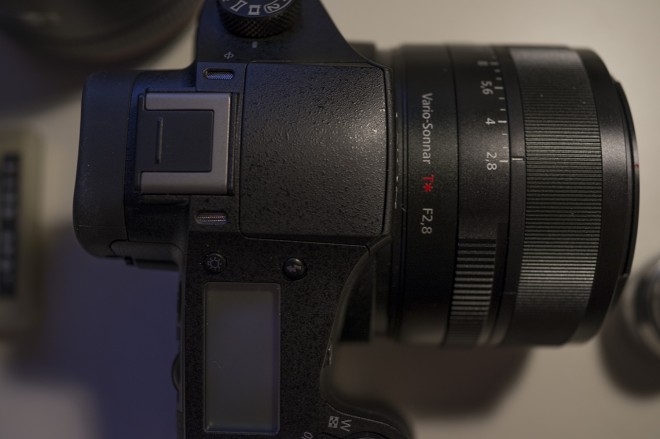
Lens
I briefly mentioned the lens earlier. I’m mentioning now in detail because it really is the best thing about the RX10. This lens and sensor combination takes the super-zoom camera to a new level, especially for stills.
Although the RX10’s widest aperture is smaller than F1.8 at wide angle (only) on the RX100, it is constant, at a very reasonable F2.8 all the way from 24mm to 200mm. That’s big news for video shooters (as well as photographers).
The only other super zoom lens that does this to my knowledge is the 24-600mm F2.8 on the Panasonic FZ200 but there’s a catch. Absolutely tiny sensor on that camera at 1/2.3″. The 1″ sensor of the RX10 dwarfs it and therefore delivers images far more like a DSLR, rather than a phone with big lens! Though 1″ is of course still much smaller than full frame it isn’t much smaller than Micro Four Thirds and is something of a sweet spot.
So the RX10 is as big a step up from other state of the art bridge cameras as the RX100 was from a standard 1/1,7″ high end compact like the Canon S110.
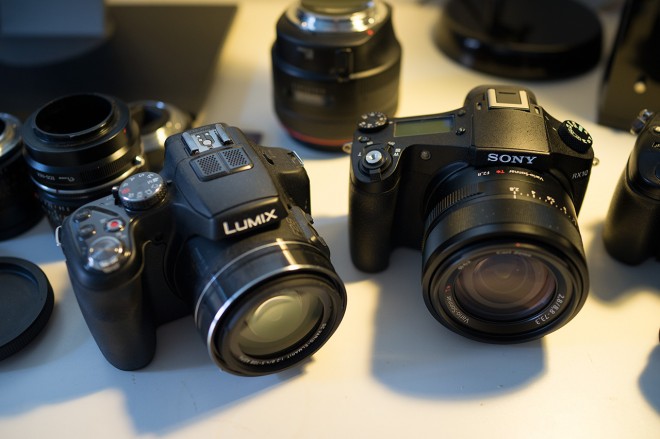
The FZ200 does however shoot 120fps at 720p.
The Zeiss lens I am sure is corrected digitally, because for such an ambitious design it has hardly any bad stuff. Virtually zero distortion. Very little purple fringing wide open or chromatic aberration. It really is clever stuff and considerably better than the Leica lens on the FZ200 in terms of outright image quality at F2.8.
For video the advantage of the constant aperture no matter what you set it to, is there’s no need to correct the exposure every time you change the framing of a shot with the zoom – you can zoom (slowly) while recording.
Also the lens is capable of giving a nice shallow depth of field on the RX10 at the longer end wide open and can focus extremely closely on subjects throughout the range but especially at wide angle.
It’s also unique. What 24-200mm F2.8 lens for full frame even exists? Even on crop sensor cameras, the excellent Sigma 18-35mm F1.8 and Panasonic 12-35mm F2.8 have vastly shorter travel.
Super 16mm a-like
Super 16 is 3x crop and Micro Four Thirds is a 2x crop. The sensor in the RX10 is a 2.7x crop and this is the key to making the lens work.
For me Super 16mm is still a very valid filming format in these full frame obsessed times – it makes focus far easier for run & gun documentary situations. The 2.7x crop is not ‘a disadvantage’ it is the secret sauce to making this camera work. Do I miss a shallow depth of field sometimes? Yes; but that’s what I have my full frame cameras for. The RX10 makes a good companion to the A7R and 5D Mark III.
Now if Zeiss would kindly make a Micro Four Thirds 8.5-74mm F2.8 version of this lens to cover the 3x crop Blackmagic Cinema Camera sensor, I would pay upwards of $3000 for one.
While extremely well built, the zoom isn’t however 100% free of wobble and it extends rather far when zoomed. Those who enjoy extending phallic objects will enjoy this. I did not! So it isn’t an internally zooming lens like the Sigma 18-35mm F1.8. That would truly be the icing on the cake.
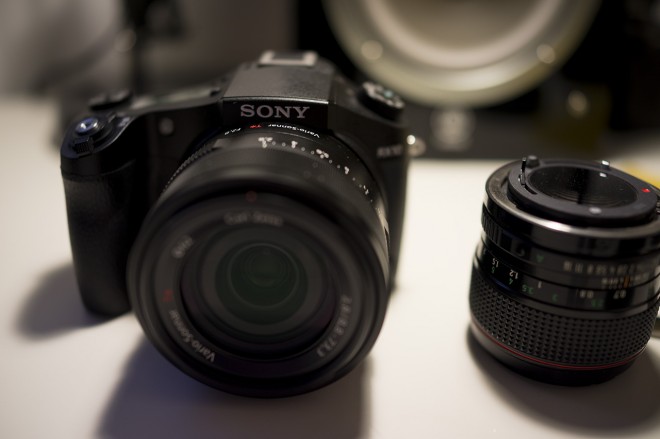
Monitoring and battery life
The EVF on the RX10 seems unnecessarily mediocre. It’s above average for a bridge camera or compact but more importantly below average for the mirrorless and DSLR cameras the RX10 is meant to compete with on everything from features, image quality, to the price. Where’s the logic in that? The EVF is pretty much unusable in strong light, leaking light in from around the uncomfortable eye cup. It has a lower resolution and contrast than the similarly priced A7 body’s OLED viewfinder and the optics are smaller.
At least the main screen is handy as it’s articulated and visibility is decent in strong light, especially in ‘strong sunlight’ mode. However if using an HDMI monitor without an Atomos-like recording ability and you need to hit record on the camera, resolution drops on your monitor.
The RX10 takes the same battery as the A7 and A7R, indeed the same battery as the older NEX cameras. It’s not a great battery and you will need to carry spares if you’re doing a day’s worth of shooting. You can just about get half an afternoon out of one charge.
Unhelpfully Sony don’t provide a charger for the battery with the RX10 so you can only charge one at once via the USB port on the camera. Not a good decision from Sony here and it smacks of cynicism. “Make them buy extras… like a charger”. Maybe a reality check is needed in Tokyo because no other camera company fails to offer a charger in the box with their high end consumer cameras.
Conclusion
This camera has so much promise and I love using it but video quality is mixed.
It will be interesting to compare it to the RX100 because a lot of people, myself included, found it quite useful for video and I don’t remember seeing as much mud or compression in 1080/60p on it.
Looking at my shots from the day I was impressed though, despite the odd shot lost through compression or aliasing. I couldn’t have got these any other way without far more painstaking rigging and lensing.
The workaround for the poor AVCHD codec, I am not a huge fan of – external recorder with wobbly HDMI cable. These reduce the practicality of the small RX10 for run & gun. I really think to equip the RX10 with the same codec as a low end NEX was a poor decision by Sony. It deserved a better one.
Yet the RX10 is still somehow compelling and for that reason it has found a place in my bag. Certainly for stills it is a winner due to the lens and sensor alone. If I were to pick the NUMBER ONE reason to buy the RX10 – it is the Zeiss 8.5-74mm F2.8 zoom with built in ND filter. That’s a big feature make no mistake. To get this on a Blackmagic Pocket Cinema Camera would be very expensive and it would be extremely front-heavy.
But whether you’d be better off spending the money on a high end zoom for another camera which is more capable for video is open to question. See if the RX10 meets your specific needs before pulling the trigger.
AT A GLANCE
EOSHD overall rating –
- BRONZE
7/10 – mixed performance
EOSHD rating in detail –
- Video quality – richly detailed but way too much aliasing on some shots – 7/10
- Codec – often major break-downs – 4/10
- Optics – stunning fixed zoom lens from Zeiss main reason for buying – 9/10
- Feature range – very well specced on paper, with built in ND filter a highlight – 9/10
- Handling – above average but some buttons too fiddly – 7/10
- Build quality – above average for a camera of this type – 8/10
Pro points
- Stunning Zeiss zoom lens, if sold as an interchangeable cine lens for Super 16mm would be worth a fortune!
- Slightly larger sensor size than Super 16mm, gives DSLR-like results especially in raw stills mode
- Locked down shots in 1080/25p do often resolve sharply with lots of fine detail
- Uncompressed HDMI avoids issues with mud and AVCHD when shooting 24 or 25p
- Comparatively large sensor for a fixed lens camera (1″ / 2.7x crop)
- Fantastic “shot getter”
- Built in ND filter (though quite weak)
- Built in EVF
- Articulated screen
- Stepless aperture ring
- Headphone and mic sockets
- Plenty of customisable buttons
- PAL / NTSC switchable
- Very attractive body styling and finish
- Good quality stills (in raw)
- Dual image stabilisation – both optical (lens) and electronic (sensor)
- Nice LCD top plate panel for info display (yet still live-view LCD cannot be completely cleared of info…dumb)
- Above average build quality
- Optional dual image stabilisation
Con points
Firmware update version 2.0 adds XAVC-S codec and 120fps so some of the biggest cons for this camera are no longer relevant…
Brain-dead codec implementation (AVCHD needs to go away)Pros may lose entire shots on paid work due to codec breakup- Mediocre low light performance
- Muddy 1080/60/50p risks losing shots in post and not much good for slow-mo
Still no 120fps slow-mo like a phone!Blotchy grain texture especially with AVCHDMacro-blocking and pixilation on motion blur which should be smooth- Most controls & buttons hard to feel for blindly when using the EVF
- EVF not up to standard of similarly priced Olympus, Panasonic, Fuji and other Sony cameras
- Articulated screen prone to making screeching sound as it scrapes the back of the camera when released
- Mediocre battery life and no included charger aside from USB adapter & cable
- Still the confusing separation of stills and movie files in playback mode
- Ridiculously low quality video still frame preview in playback mode!!
- In manual focus mode, quite hard to tell if image is in focus without using punch in focus assist
- Manual focus ring does not act like a mechanical one – can be confusing
- Punch-in focus assist cannot be used at same time as recording and not windowed
- Peaking not very effective compared to Blackmagic Pocket Cinema Camera
- Most effective image stabilisation mode slightly reduces image quality and crops the frame (may as well do it in post)
- Cannot shoot stills when mode dial set to video like on other cameras
- Camera complains about database restructuring most of the time when a SD card is inserted
- Menus are too dense – too many pages and options


